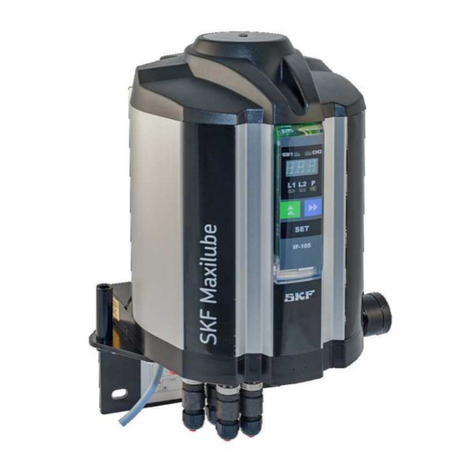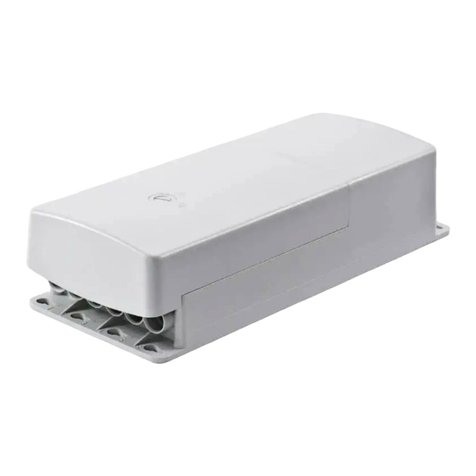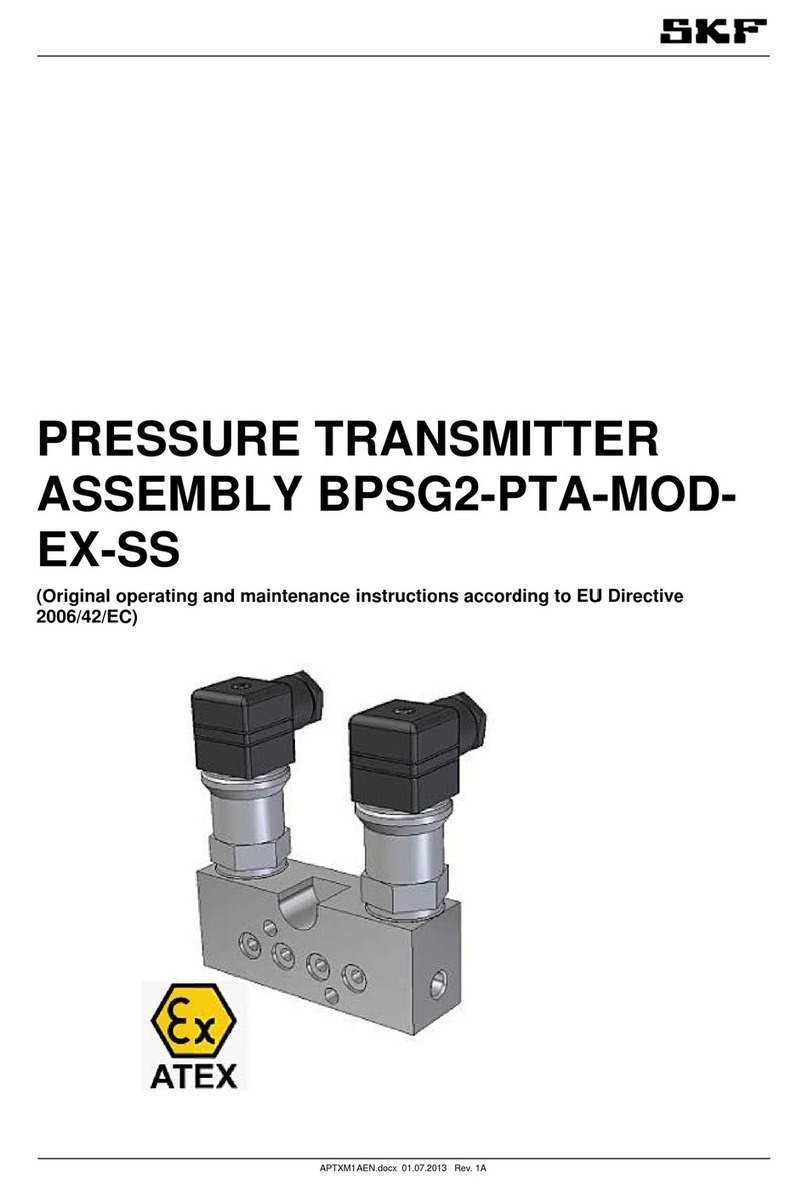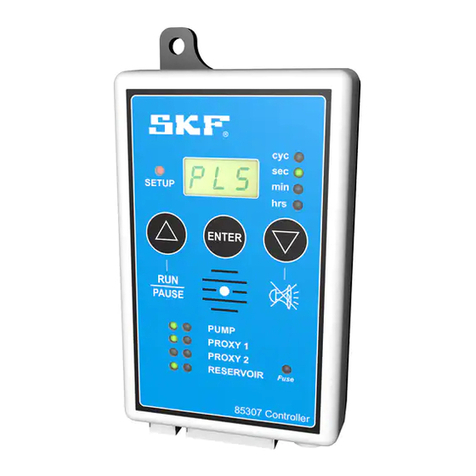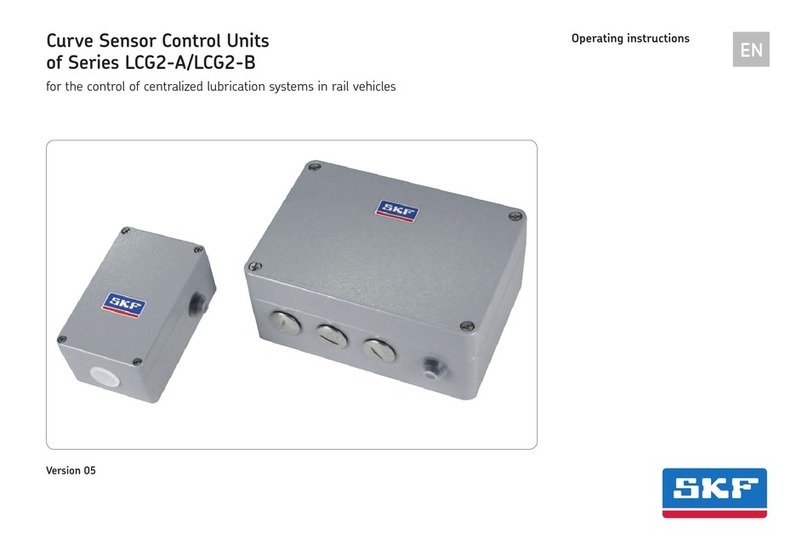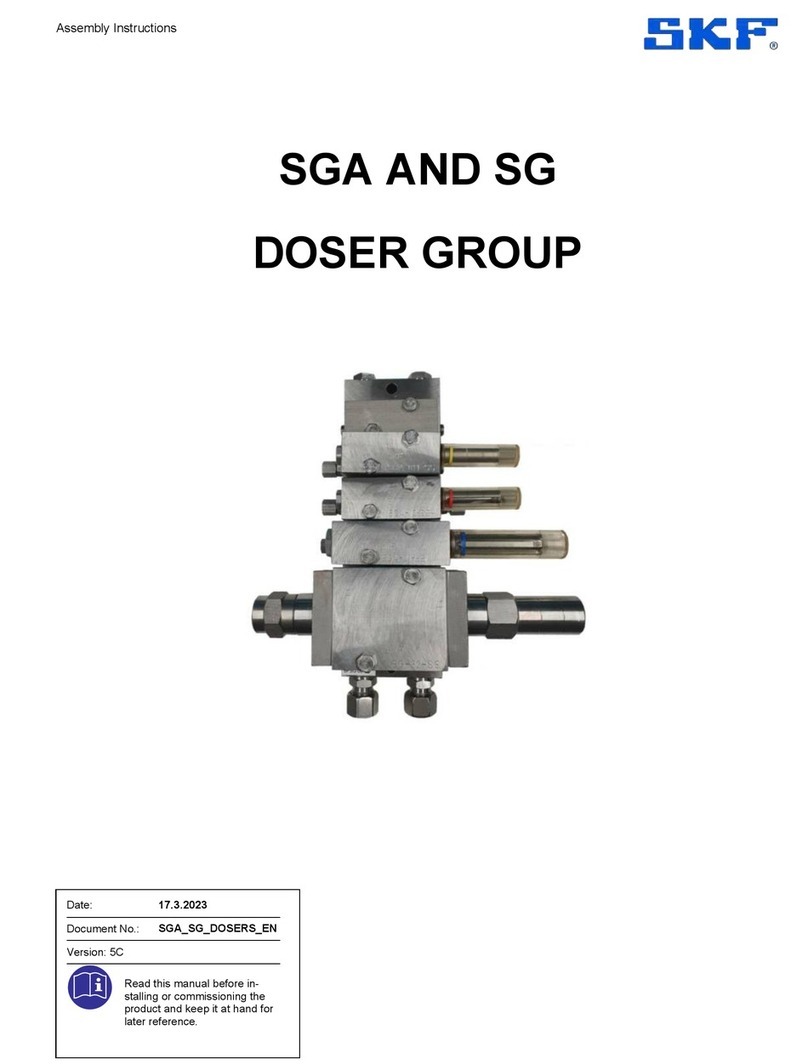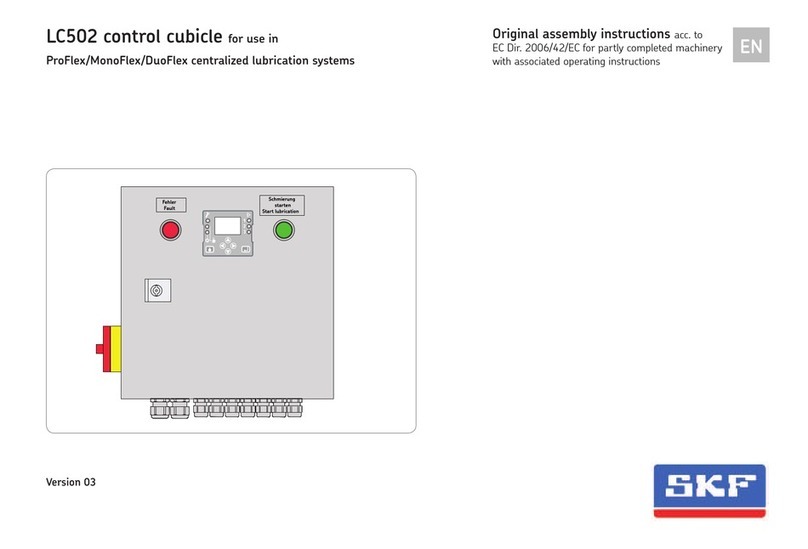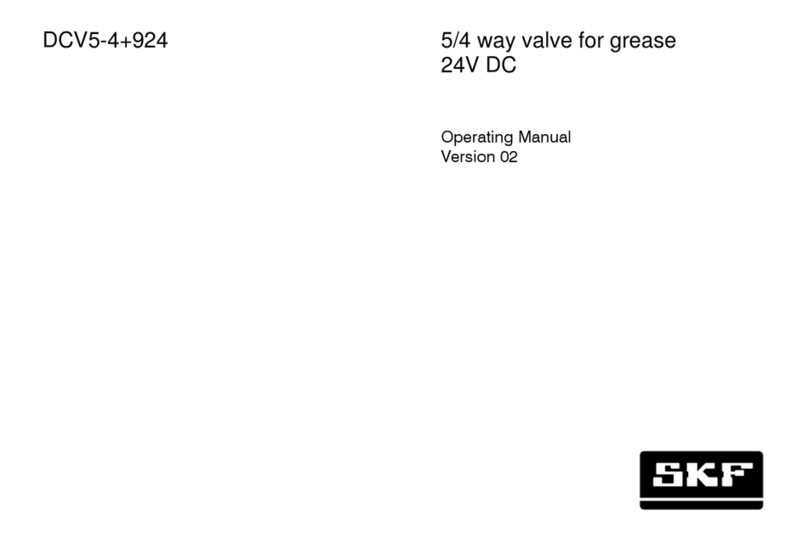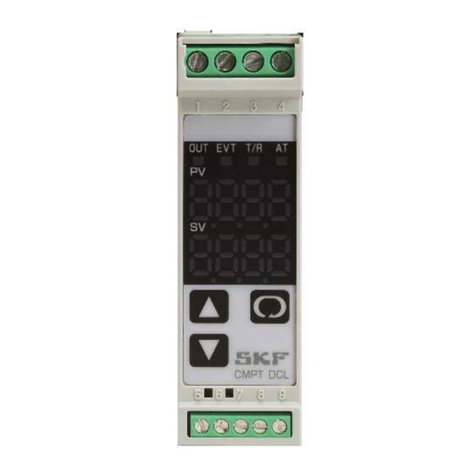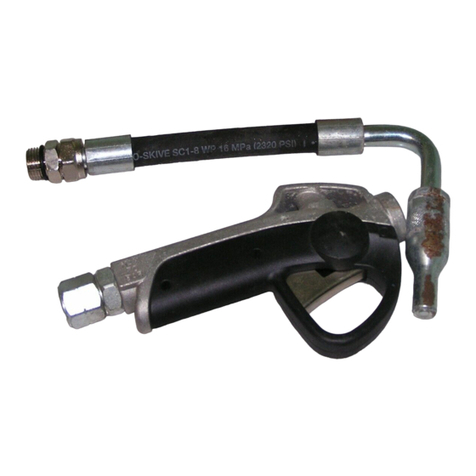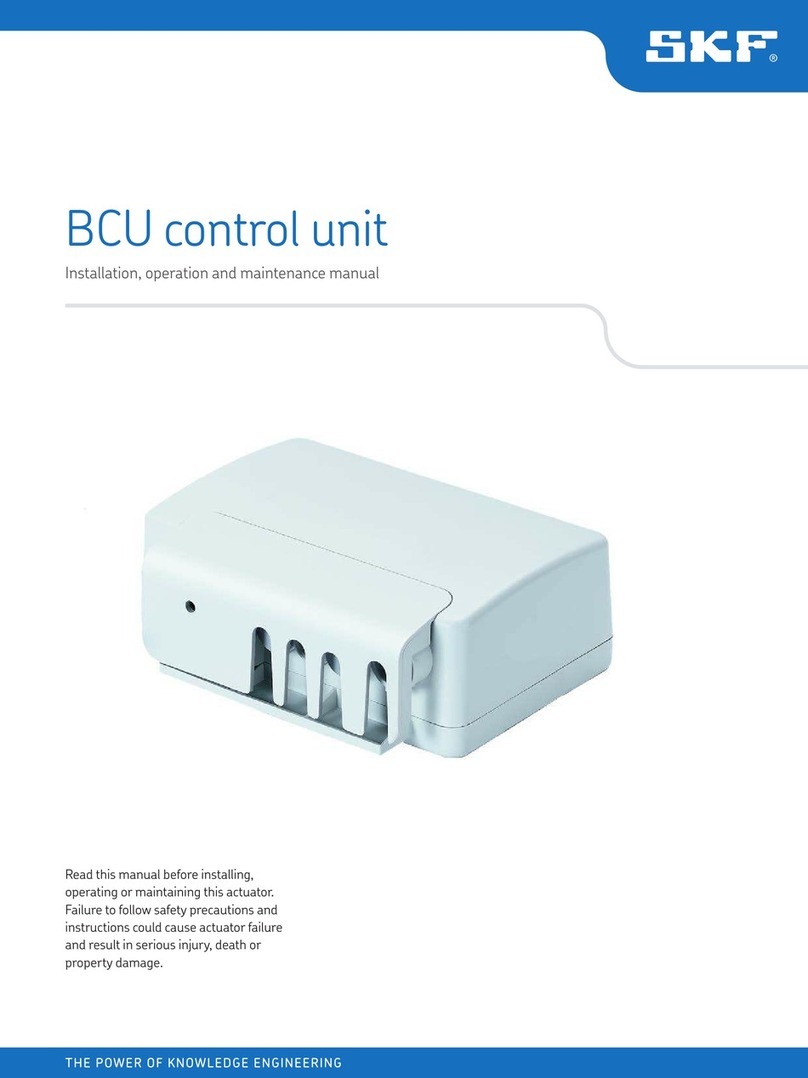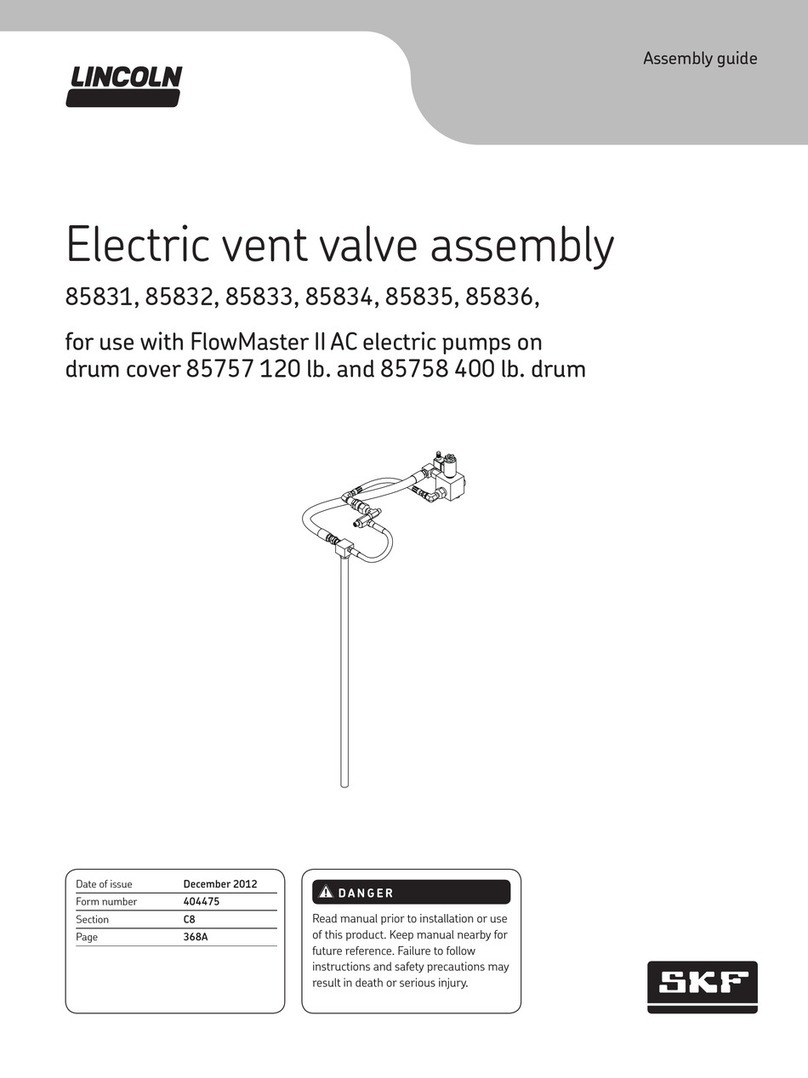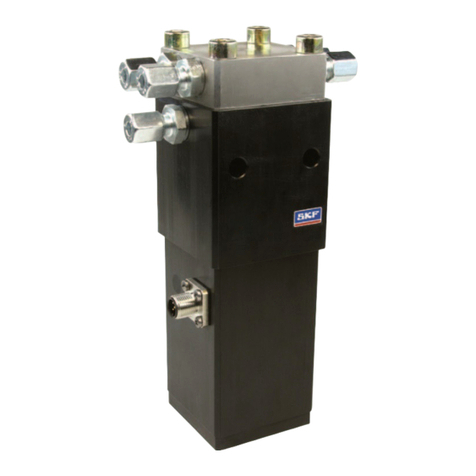
- 6 -
951-170-238-EN
Version 01
EN Table of contents
6. Assembly ..................................................................................... 45
6.1 General information .............................................................................45
6.2 Minimum mounting dimensions.........................................................46
6.3 Assembly drawing SMBM-X ...............................................................47
6.3.1 Assembly drawing SMBM-X00 without
gear-type flow indicator, without signal transmitter ..................47
6.3.2 Assembly drawing SMBM-X31 with piston detector .................47
6.3.3 Assembly drawing SMBM-X21/X22 with signal transmitter ...48
6.3.4 Assembly drawing SMBM-X01/X02/ X03 with
gear-type flow indicator ................................................................48
6.3.5 Assembly drawing SMBM-X11/X12/X13 with
gear-type flow indicator and pulse generator ............................49
6.3.6 Assembly drawing SMBM-X41/X42/X43
SMBM-X51/X52/X53 Flow limiter with
with gear-type flow indicator and signal transmitter ................49
6.3.8 Assembly drawing SMBM-X61/X62/X63 Flow limiter with
gear-type flow indicator and piston detector ..............................50
6.3.7 Filter unit for flow limiter SMBM-X ..............................................50
6.3.9 Base plates for flow limiter SMBM-X ...........................................51
6.4 Assembly drawing SMBM-V ...............................................................53
6.4.1 Assembly drawing SMBM-V00 without
gear-type flow indicator, without signal transmitter ..................53
6.4.2 Assembly drawing SMBM-V31 with piston detector .................53
6.4.3 Assembly drawing SMBM-V21/X22 with signal transmitter ...54
6.4.4 Assembly drawing SMBM-V01/V02/V03 with
gear-type flow indicator, pulse generator ...................................54
6.4.5 Assembly drawing SMBM-V11/V12/V13 with
gear-type flow indicator, pulse generator ...................................55
6.4.6 Assembly drawing SMBM-V41/V42/V43
SMBM-V51/V52/V53 Flow limiter with
gear-type flow indicator and signal transmitter .........................55
6.4.7 Assembly drawing SMBM-V61/V62/V63 Flow limiter with
gear-type flow indicator and piston detector ..............................56
6.4.8 Filter unit for flow limiter SMBM-V ..............................................56
6.4.9 Changeover valve for flow limiter SMBM-V ................................57
6.4.10 Base plates for flow limiter SMBM-V ...........................................58
6.5 Assembling the flow limiters SMBM ..................................................60
6.6 Mechanical connection options SMBM .............................................62
6.7 Electrical connection of piston detector 24-1884-2785 ................63
6.8 Electrical connection of pulse generator 2340-00000030 ............64
6.9 Electrical connection of signal transmitter 24-1072-2124 ..........65
6.10 Electrical connection of changeover valve 24-1254-2486 ............67
6.11 Lubrication line connection ................................................................68
7. First start-up .............................................................................. 69
7.1 Inspections before first start-up .........................................................69
7.2 Inspections during first start-up.........................................................69
8. Operation .................................................................................... 70
8.1 Temporary shutdown ...........................................................................70
8.2 Permanent shutdown and disposal ....................................................70
8.3 Disposing of dismantled parts ............................................................70
